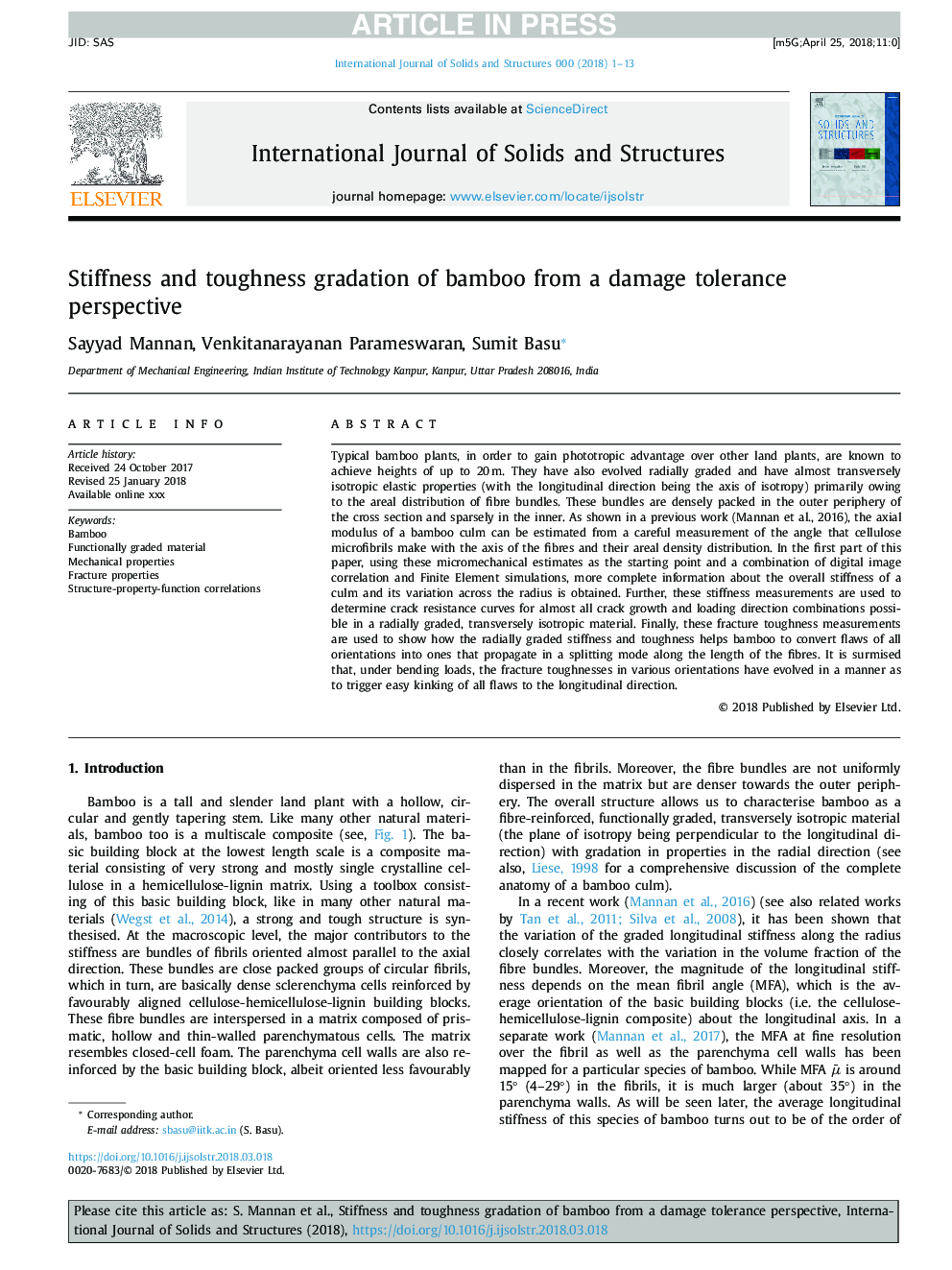| Article ID | Journal | Published Year | Pages | File Type |
|---|---|---|---|---|
| 6748303 | International Journal of Solids and Structures | 2018 | 13 Pages |
Abstract
Typical bamboo plants, in order to gain phototropic advantage over other land plants, are known to achieve heights of up to 20âm. They have also evolved radially graded and have almost transversely isotropic elastic properties (with the longitudinal direction being the axis of isotropy) primarily owing to the areal distribution of fibre bundles. These bundles are densely packed in the outer periphery of the cross section and sparsely in the inner. As shown in a previous work (Mannan et al., 2016), the axial modulus of a bamboo culm can be estimated from a careful measurement of the angle that cellulose microfibrils make with the axis of the fibres and their areal density distribution. In the first part of this paper, using these micromechanical estimates as the starting point and a combination of digital image correlation and Finite Element simulations, more complete information about the overall stiffness of a culm and its variation across the radius is obtained. Further, these stiffness measurements are used to determine crack resistance curves for almost all crack growth and loading direction combinations possible in a radially graded, transversely isotropic material. Finally, these fracture toughness measurements are used to show how the radially graded stiffness and toughness helps bamboo to convert flaws of all orientations into ones that propagate in a splitting mode along the length of the fibres. It is surmised that, under bending loads, the fracture toughnesses in various orientations have evolved in a manner as to trigger easy kinking of all flaws to the longitudinal direction.
Related Topics
Physical Sciences and Engineering
Engineering
Civil and Structural Engineering
Authors
Sayyad Mannan, Venkitanarayanan Parameswaran, Sumit Basu,
